Published by by Beginner Guitar HQ Staff
- How to Play Bass Guitar like Paul McCartney
- Guide Breakdown
- Playing Style: Goals
- With the Beatles
- Wings & Solo Artist
- Bass Guitar Techniques
- Playing With a Pick
- Blues Vocabulary
- Uses for Blues
- Early Beatles: Simple, Basic Chord Tones
- Later Beatles: Chromaticism
- Using Chromaticism in Your Playing
- Gear
- Hofner Violin Bass
- Rickenbacker Bass (4001/4003)
- Amps & Accessories
- Conclusion
- Download McCartney’s and The Beatles’ sheet music books from our Library, or play along with them and the best rock bands.
- Read the full article published by Beginner Guitar HQ here.
How to Play Bass Guitar like Paul McCartney
Paul McCartney might just be the most famous bass player of all time. Beginning with his career in the Beatles and continuing through his careers with Wings and as a solo artist, McCartney has revolutionized the role of the bass in popular music, and changed the image of the bass guitar overall. Bassists today, in all genres, owe a lot of their presence and style to Sir Paul.
Over the course of his storied lifetime, Paul McCartney has shifted between a wide variety of different bass styles. His playing has evolved consistently, and at times it’s taken left turns into new genres entirely.
That evolution has helped make Paul one of the most enjoyable bass players to listen to in the history of rock and roll. While they might be complex, dense, or even difficult to wrap your head around, McCartney’s bass parts are almost always interesting.
He’s demonstrated all of the different ways how the bass guitar can drive a song — from holding down the rhythm with rock-solid ostinato grooves to flying over the drums and providing an iconic hook that sticks in the ears of all of the listeners.

Guide Breakdown
Browse in the Library:
| Artist or Composer / Score name | Cover | List of Contents |
|---|---|---|
| ABRSM Piano Exam 2023-24 Grade 3 C3 THE ENTERTAINER – SCOTT JOPLIN |
 |
|
| ABRSM Piano Exam 2023-24 In The Groove by Mike Cornick |
 |
|
| ABRSM Piano Exam 2023-24 Indigo Moon by Elissa Milne |
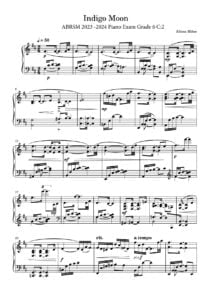 |
|
| ABRSM Piano Exam 2023-24 Jester’s Jig by Chee-Hwa Tan |
 |
|
| ABRSM Piano Exam 2023-24 Love Theme by Catherine Rollin |
 |
|
| ABRSM Piano Exam 2023-24 Minuet In G (Anonymous) |
 |
|
| ABRSM Piano Exam 2023-24 The Song Of Twilight by Yoshinao Nakada |
 |
|
| ABRSM Piano Exam Pieces Grade 1 2013 & 2014 syllabus |
 |
ABRSM Piano Exam Pieces Grade 1 2013 & 2014 syllabus |
| ABRSM Piano Exam Pieces Grade 1 2023 2024 |
 |
ABRSM Piano Exam Pieces Grade 1 2023 2024 |
| ABRSM Piano Exam Pieces Grade 1 2025 2026 |
 |
ABRSM Piano Exam Pieces Grade 1 2025 2026 |
| ABRSM Piano Exam Pieces Grade 2 2023 2024 |
 |
ABRSM Piano Exam Pieces Grade 2 2023 2024 |
| ABRSM Piano Exam Pieces Grade 3 2013 2014 |
 |
|
| ABRSM Piano Exam Pieces Grade 3 2023 2024 |
 |
ABRSM Piano Exam Pieces Grade 3 2023 2024 |
| ABRSM Piano Exam Pieces Grade 3 2025 2026 |
 |
ABRSM Piano Exam Pieces Grade 3 2025 2026 |
| ABRSM Piano Exam Pieces Grade 4 2021 2022 |
 |
ABRSM Piano Exam Pieces Grade 4 2021 2022 |
| ABRSM Piano Exam Pieces Grade 4 2023 2024 |
 |
|
| ABRSM Piano Exam Pieces Grade 5 2023 2024 |
 |
ABRSM Piano Exam Pieces Grade 5 2023 2024 |
| ABRSM Piano Exam Pieces Grade 6 2023 2024 |
 |
ABRSM Piano Exam Pieces Grade 6 2023 2024 |
| ABRSM Piano Exam Pieces Grade 7 2023 2024 |
 |
ABRSM Piano Exam Pieces Grade 7 2023 2024 |
| ABRSM Piano Exam Pieces Grade 8 2023 2024 |
 |
ABRSM Piano Exam Pieces Grade 8 2023 2024 |
| ABRSM Piano Exam Pieces Grade 8 2025 2026 |
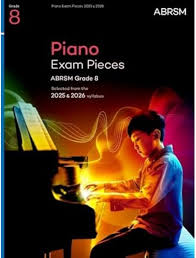 |
ABRSM Piano Exam Pieces Grade 8 2025 2026 |
| ABRSM Piano Mix 3 for Easy Piano Grades 3-4 |
 |
ABRSM Piano Mix 3 for Easy Piano Grades 3-4 |
| ABRSM Piano Prep Test |
 |
|
| ABRSM Piano Scales And Arpeggios from 2021 Guide For Practical Grades |
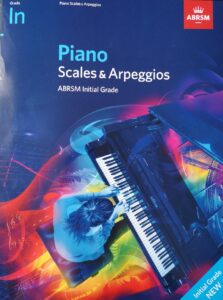 |
|
| ABRSM Selected Piano Exam 2011 2012 Grade 1 |
 |
|
| ABRSM Selected Piano Exam Grade 2 (2011 2012 ) |
 |
|
| ABRSM Specimen Aural Tests Grade 1 to 3 |
 |
|
| ABRSM Specimen Aural Tests Grade 4 & 5 |
 |
|
| ABRSM Teaching notes on piano exam pieces (2013 & 2014) |
 |
|
| ABRSM The Manual Of Scales Broken Chords And Arpeggios For Piano |
 |
|
| ABRSM Theory of Music Exams Grade 8 (The Associated Board of Royal Schools of Music) 2010 |
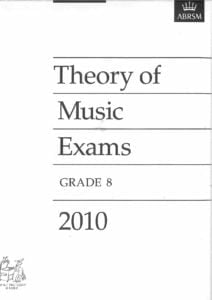 |
|
| AC/DC – Classic – Early Years – High Voltage And Let There Be Rock (Guitar Tab Songbook) |
 |
ACDC – Classic – Early Years – High Voltage And Let There Be Rock |
| AC/DC – Jam With AC/DC (PDF with MP3 audio tracks Guitar Tab Songbook) |
 |
Jam With ACDC |
| AC/DC Rock Score |
 |
|
| AC/DC, Best of (Guitar & Tablature) |
 |
Best Of ACDC (Guitar) |
| Ace Of Base – Beautiful Life | ||
| Ace Of Base – Dont Turn Around | ||
| Ace Of Base – Living In Danger | ||
| Acoustic 33 TOP Guitar Hits (Guitar Songbook) with Tablature – sheet music |
 |
Acoustic 33 TOP Guitar Hits (Guitar Songbook) – sheet music |
| Acoustic Blues Guitar By Kenny Sultan Guitar Tab |
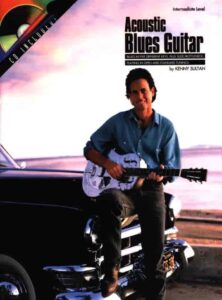 |
Acoustic Blues Guitar |
| Acoustic Blues Guitar Keith Wyatt with TABs |
 |
Acoustic Blues Guitar Keith Wyatt with TABs |
| Acoustic Blues Guitar Styles (Larry Sandberg) (with Tablature) |
 |
Acoustic Blues Guitar Styles (Larry Sandberg) |
| Acoustic Classics 42 songs Piano Vocal Guitar |
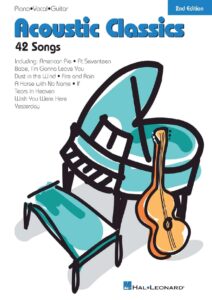 |
Acoustic Classics 42 songs Piano Vocal Guitar |
| Acoustic Guitar Bible (35 great songs) Guitar with TABs |
 |
Acoustic Guitar Bible (35 great songs) Guitar with TABs |
| Acoustic Rock (Guitar) Rolling Stones, Green Day, Pink Floyd, Bob Dylan (Songbook Guitar Tab) with Tablature |
 |
|
| Acoustic Rock 90’s, Best of – Guitar with Tablature |
 |
Acoustic Rock 90’s, Best of – Guitar |
| Acqua azzurra acqua chiara (Battisti) | ||
| Ad Te Levavi (Musescore File).mscz | ||
| Adagio (Lara Fabian) | ||
| Adagio MP3.zip | ||
| Adah’s Theme (La femme avec les yeux lumineux) Sex and the City |
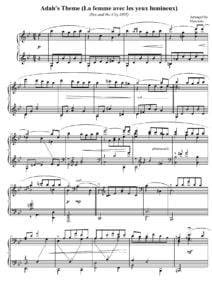 |
|
| Adah’s Theme (Le femme avec les yeux lumineux) Sex and the Cit | ||
| Adam – Adolphe Charles Holy Night Cantique-Nöel |
 |
|
| Adam – Cantique de Nöel Minuit Chretiens | Adam – Cantique de Noel Minuit Chretiens VS | |
| Adam – Derniers souvenirs d’un musicien |
 |
|
| Adam – O Holy Night | Adam – O Holy Night | |
| Adam – Souvenirs d’un musicien |
 |
|
| Adam (Cappeau) – Cantique de Noël. Easy Piano with voice or instrument (Paroles and lyrics) |
 |
Adam-Cappeau-Cantique-de-Noel- |
| Adam (Cappeau) – Cantique de Noel. Easy Piano with voice or instrument.mscz | ||
| Adam Cantique de Nöel Christmas song | Adam Cantique de noel | |
| Adam Carse – The History Of Orchestration Adam Carse |
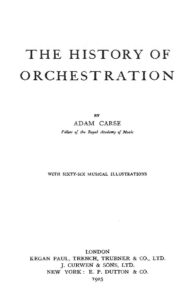 |
|
| Addams Family Theme (Musescore File).mscz | ||
| Addams Family Theme (Easy Piano) |
 |
|
| Addio Colonnello (Ennio Morricone) | ||
| Adele Songs from the Album 21 For SATB, SSA and Piano |
 |
Adele Songs from the Album 21 |
| Adele – 21 |
 |
ADELE 21 SONGBOOK |
| Adele – Chasing Pavements Piano Vocal guitar chords |
 |
|
| Adele – Easy on me (Piano solo with lyrics) |
 |
|
| Adele – Rolling in the Deep |
 |
|
| Adele – Rumor Has It |
 |
|
| Adele – Set Fire to the Rain |
 |
|
| Adele – Set Fire To The Rain (2) (Musescore File).mscz | ||
| Adele – Someone Like You | Adele – Someone Like You | |
| Adele – Someone Like You easy piano |
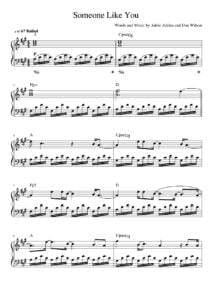 |
|
| Adele – The Best Of SongBook (12 songs arranged for easy piano) |
 |
Adele – The Best Of SongBook (12 songs arranged for easy piano) |
| Adele 19 [Piano, Guitar, Vocals] |
 |
Adele 19 [Piano, Guitar, Vocals] |
| Adele 25 Songbook |
 |
Adele 25 Songbook Contents —  |
| Adele Best Of Adele Big Note Piano (Adele Adkins) |
 |
Adele Best Of Adele Big Note Piano (Adele Adkins) |
| Adele Easy On Me Sheet Music |
 |
|
| Adele Original Keys For Singers (Adele) |
 |
Adele Original Keys For Singers (Adele) |
| Adele Skyfall (Piano Vocal Guitar Chords) | Adele Skyfall (Piano Vocal Guitar Chords) | |
| Adios Amor – Goodbye My Love as recorded by José Feliciano |
 |
|
| Adult All In One Course Level 1 With Audio Mp3 (Willard Palmer) |
 |
Lessons Alfred’s Basic Adult Piano Course Level 1 |
| Adult All In One Course Level 2 With Audio Mp3 (Willard Palmer) |
 |
Willard Palmer – Adult All-In-One Course Level 2 |
| Adult Greatest Movie Hits Piano Level 1 |
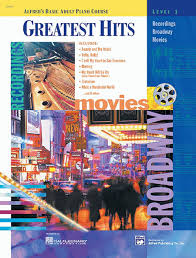 |
Adult Greatest Movie Hits Piano Level 1 |
| Adult Piano Adventures ALL-IN-ONE PIANO COURSE 1 |
 |
|
| Adult Piano Adventures All-In-One Piano Course Book 2 Book With Media Online (Nancy Faber, Randall Faber) Sheet Music |
 |
|
| Adult Piano Adventures Christmas – Book 1 (Nancy Faber Randall Faber) |
 |
|
| Adult Piano Adventures Christmas – Book 2 |
 |
Adult Piano Adventures Christmas – Book 2 |
| Adult Piano Adventures Popular Book 1 – Timeless Hits and Popular Favorites (Adult Piano Adventures Popular) |
 |
Adult Piano Adventures Popular Book 1 – Timeless Hits and Popular Favorites (Adult Piano Adventures Popular) |
| Adult Piano Course Greatest Movie Hits Piano Level 1 Recordings Broadway Movies |
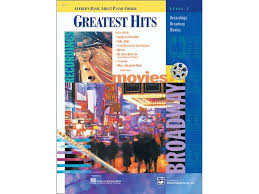 |
Adult Piano Course Greatest Movie Hits Piano Level 1 Recordings Broadway Movies |
| Advanced Harmonic Concepts by Wayne Naus (with audio MP3) |
 |
Advanced Harmonic Concepts by Wayne Naus |
| Advanced Harmonic Exercises For Jazz Piano |
 |
advanced harmonic exercises |
| Advanced Piano Solos 1 Encyclopedia by Tom Roed |
 |
Advanced Piano Solos 1 Encyclopedia by Tom Roed |
| Advanced Piano Solos 2 Complete by Tom Roed |
 |
Advanced Piano Solos 2 Complete by Tom Roed |
| Advanced Sacred Music Piano Solos by John Kraus |
 |
|
| Advanced Scale Concepts and Licks for Guitar (PDF + MP3 audio tracks Play Along) with Tablature |
 |
 |
| Aebersold – 110 – When I fall In Love – Romantic Ballads pdf with embedded audio MP3 Tracks |
 |
Jazz Play Along Vol 110 [When i Fall in Love] |
| Aebersold – 113 Embraceable You – Vocal Standards with audio MP3 Tracks |
 |
Jamey Aebersold – Vol 113 |
| Aebersold – 30 blues scale By Jamey Aebersold | Aebersold – 30 blues scale By Jamey Aebersold | |
| Aebersold – A New Approach To Jazz Improvisation Gettin’it together vol. 21 |
 |
aebersold gettin all together vol 21 |
| Aebersold – Practice Procedures For Memorizing Scales And Chords | Aebersold – Practice Procedures For Memorizing Scales And Chords | |
| Aebersold – Rapid Reference Vol 1-114 | Aebersold – Rapid Reference Vol 1-114 | |
| Aebersold – Vol 01 – How to Play and Improvise Jazz (with audio MP3) |
 |
Aebersold – Vol 01 – How to Play and Improvise Jazz |
| Aebersold – Vol 03 – The II-V7-I Progression Jazz Play Along Book + Audio Mp3 |
 |
|
| Aebersold – Vol 105 – Dave Brubeck Jazz Play Along Book + Audio Mp3 |
 |
|
| Aebersold – Vol 118 – [Groovin Jazz] (with audio MP3) |
 |
|
| Aebersold – Vol 32 – Ballads Jazz Play Along Book + Audio Mp3 |
 |
|
| Aebersold – Vol 34 – Jam Session Jazz Play Along Book + Audio Mp3 |
 |
Includes MP3 Play along themes as Blue moon, The shadow of your smile, Over the rainbow, etc. |
| Aebersold – Vol 45 – [Bill Evans] Jazz Play Along Book + Audio Mp3 |
 |
Aebersold – Vol 45 – [Bill Evans] |
| Aebersold – Vol 58 – Unforgettable Standards Jazz Play Along Book + Audio Mp3 |
 |
aebersold unforgettable standards sheet music |
| Aebersold – Vol 76 – David Baker – How To Learn Tunes (A Jazz Musician’s Survival Guide) |
 |
how to learn tunes |
| Aebersold 25 How To Practice By Jamey Aebersold | Aebersold 25 | |
| Aebersold Antonio Carlos Jobim Vol 98 – Bossa Nova Songbook Jazz Play Along Book + Audio Mp3 |
 |
Aebersold Antonio Carlos Jobim Vol 98 – Bossa Nova Songbook |
| Aebersold Anyone Can Improvise – 52 Points To Remember | Aebersold Anyone Can Improvise – 52 Points To Remember | |
| Aebersold Jazz EAR training (with audio MP3) |
 |
Aebersold Jazz EAR train |
| Aebersold Jazz Handbook 09 Tips For Learning A New Tune & Practice Procedures For Memorizing |
 |
Aebersold Jazz HANDBOOK |
| Aebersold Jazz Play-Along Books & audio MP3 1st Part Full Collection – Vol 1- 40 (with MP3) for all instruments |
Compressed file  Aebersold Full Collection Part 1 – Vol 1- 40 Aebersold Full Collection Part 1 – Vol 1- 40 |
40 volumes with MP3 Aebersold Book Index Vol.001-106 |
| Aebersold Jazz Play-Along Books & audio MP3 2nd Part Full collection Vol 41- 75 for all instruments | Compressed fileAebersold Full Collection Part 2 – Vol 41- 75.. | 35 volumes with MP3 Aebersold Book Index Vol.001-106 |
| Aebersold Jazz Play-Along Books & audio MP3 3rd Part Full Collection – Vol 76- 112 (with MP3) | Compressed fileAebersold Full Collection Part 3 – Vol 76- 112 | 37 volumes with MP3 Aebersold Book Index Vol.001-106 |
If you want to learn how to play bass guitar (or find a good bass model for beginners), Paul McCartney is an essential player to learn from.
No matter which styles of bass guitar you like to play, Paul’s career will offer something for you — he’s dabbled in a lot of different styles, which makes him one of the most revered and versatile bass players ever to pick up the instrument.
This guide discusses everything that you need to know in order to play like Paul McCartney.
We’ll discuss the specifics of his technique, as well as many of the general ideas to keep in mind if you want to play like Paul McCartney. These ideas include broad areas to focus on, as well as more specific points to help improve your playing style and help you find your sound.
Finally, we’ll touch on some of the gear that you might want to buy in order to emulate Paul McCartney’s tone.
A lot of the items that McCartney has used throughout his music career have been very expensive. The large amounts of gear that he’s used also makes it difficult to emulate ihm exactly. Oftentimes, McCartney would adopt one or two main basses for his time with one group, and then move on when those groups broke up or petered out.
However, when those expensive cases come up, we’ll provide affordable alternatives and explain what makes them the best choice for players on a tighter budget. Paul’s lasting influence on the bass guitar world means that most.
Playing Style: Goals
If you’re setting out to emulate a particular musician when they do something, it’s absolutely essential to keep their goals and contexts in mind. Simply put, if you’re not playing towards the same goals as the musicians that you want to sound like, you’ll find it very difficult to emulate them successfully.
Without reflecting on the long-term creative goals of your favorite players and how they achieved those in their playing, it will be difficult to provide any decent approximation of their sound. You won’t be thinking about the parts in the same way, and won’t frame them within the right context to serve the song and the creative vision accurately.
With that warning in mind, here are some of Paul McCartney’s goals when he plays bass guitar. I’ve collected many of these goals just from observing his playing style and the music he makes. I’ve also come to recognize how his playing style changes as his big-picture goals shift.
With the Beatles
On a lot of the Beatles’ records, Paul felt moved to write rhythmic parts to anchor a groove behind a band over top. This was particularly noteworthy during the band’s first few records, which prioritized faster tempos and quick, danceable grooves. Paul needed to establish a consistent, tight bassline in order to lock in with Ringo Starr on the drums.
As the band began to mature, McCartney’s goals changed a bit. Rather than hitting a pulse on every beat, he began to focus on using the bass to create proper melodies. Instead of backing up the rhythm guitar or just playing the root note of every chord, these bass lines were unique, melodic, and much more articulate.
Of course, Paul could still deliver a pounding, groovy bassline — just check out his work on White Album tracks like “Helter Skelter” or “Yer Blues”! But instead of focusing exclusively on these styles, McCartney was able to expand his range and palette significantly.
Wings & Solo Artist
As a solo artist after the breakup of the Beatles, McCartney began to blend some of these techniques to create a new style on the bass. A lot of tracks, like “Hi Hi Hi,” focused on driving the beat forward with a chugging bassline, just like he did in the early days of the Beatles.
However, he also had a lot of softer, suave basslines, like on his album Band on the Run. Te mixes of these different styles continued the work he had done in the Beatles’ later years, and brought some trends back forward from the early work of the group.
This synthesis of different styles yielded a lot of great work, although it’s also been a bit more inconsistent than a lot of his work in the Beatles. Obviously, having the songwriting geniuses of John Lennon (who was also a great rhythm guitarist) and George Harrison to work with couldn’t have hurt!
Overall, though, all different pieces of McCartney’s career have a lot of valuable techniques which you can learn from to play bass like him.
With that in mind, let’s get into the specific techniques McCartney uses, so you can learn how to play like him! Then, we’ll break down his favorite pieces of gear.
Bass Guitar Techniques
Any bassist with a career as long as McCartney’s will use a ton of different techniques. That makes it difficult, if not impossible, to cover all of them in one short article. However, if you want to get a quick estimation of McCartney’s talents and playing style, these techniques are some of his favorites. Learning how to use these skills will help you sound and feel like Paul on the bass.
Playing With a Pick
Playing with a pick is a pretty divisive technique in the bass community — some bassists love the sound and feel that it affords them, while other maintain that picks are for guitars only — and that bassists who play with one should learn how to play with their fingers instead.
Of course, these debates are often a bit silly. There’s no such thing as a “right” or “wrong” sound on the instrument, and even what makes a given bass tone sound “good” is highly subjective. However, if you want to play like Paul McCartney, playing with a pick is absolutely essential.
Paul played with a pick from his earliest days on the instrument, and continued this habit all throughout his career. It’s rare to find a Beatles where he plays with his fingers instead. Using a pick has a number of tonal advantages, particularly with the violin-style basses that Paul liked to use. We’ll focus on the violin basses in more depth later, but for now let’s talk about picking.
Playing bass with a pick increases your attack on the instrument — this means that the note is sharper, more precise, and more “in your face.” If you listen to clips of bassists comparing fingerstyle playing to playing with a pick (like the video that we’ve featured above), you’ll see the difference in attack.
Like the attack, you can play with a pick to get more presence out of your bass. The exact meaning of the term “presence” is a bit nebulous to some, but it generally signifies a better response in the midrange and upper registers of the bass.
Listeners often perceive a bass tone with a lot of presence as sharper, or more distinct. Notes don’t blend together as much, and it’s easier to hear dynamics, rhythm, and phrasing. That top boost is also handy, particularly when playing with hollow-body basses. Semi- and fully hollow basses add a round, warm acoustic tone to your bass. Playing with a pick balances it out.
If you’re looking for examples where McCartney’s pick playing made a difference in his tone, all you need to do is check out some Beatles records. It’s a consistent presence throughout, but you will hear it more easily on some songs than on others.
“I Saw Her Standing There,” from the band’s first album Please Please Me, is a good example to listen to. Notice how bouncy and crisp each note is on the bass. The attack and cutting tone of Paul’s pick makes the bassline go, and drives the song forward by extension.
From the Beatles’ later work, “Come Together” is another easy option to hear the way that playing with a pick changes your tone. This song is the opening track on Abbey Road, and its bassline is one of the most famous of all time. Once again, you can hear how the pick keeps every note in the riff clear and defined. It provides better phrasing and a clearer sound overall.
Blues Vocabulary
While there were certainly mechanical aspects that influenced Paul’s playing style and sound, most of his crucial techniques had to do with how he actually played the notes. In that regard, one of his first and most prominent influences was the blues.
Blues permeated the early rock and roll records that he listened to before the Beatles were founded, and that style of music provided the band’s main inspiration for the first half of their career. If you want to find a great blues guitar on a budget, check out our comprehensive guide to the best cheap blues guitars.
Paul incorporated a lot of the language of early rock and roll and used it in his playing. All you need to do is listen to the chord progressions and rhythmic, driving basslines of albums like With the Beatles and A Hard Days’ Night to understand the role that blues music served in Paul’s style on the bass.
This is particularly prominent on the Beatles’ cover songs. They often covered blues songs outright, like Chuck Berry’s “Roll Over Beethoven” or Berry Gordy’s “Money (That’s What I Want).” These songs provided a forum for McCartney to demonstrate his skill at playing blues bass, and incorporate that influence into his playing on other songs as well.
Becoming fluent in blues guitar playing takes a bit of effort. There are a lot of different aspects you’ll need to know, like how to play over a 12 bar blues sequence and how to play blues turnarounds. You might also want to learn some basic blues improvisation, because these techniques will help you play bass like Paul McCartney.
Uses for Blues
Paul used these techniques for a few main reasons. First, the blues emphasize stock, repetitive chord progressions that make it easy to drive a song forward. Rather than focusing on the root of every chord and just playing one note in each chord, 12 bar blues songs allow plenty of time for bassists to establish a rhythm through driving, repetitive playing.
The rhythm of the blues also translates to a lot of other styles of early rock and roll. Lots of blues and rockabilly songs, particularly those released in the 1950s, emphasize syncopation and swing. These aspects are important to know, because Paul often incorporated swing feeling into his bass playing.
If you learn how to play blues, your time feel and rhythmic skills will improve, which will in turn allow you to play more consistent swung basslines and sound like Sir Paul. Combine that with the hard-charging rhythms of lots of blues standards, and you’ll be sounding like the basslines from the early Beatles in no time!
Early Beatles: Simple, Basic Chord Tones
Learning the chord tones of a given chord is crucial to play bass like Paul McCartney. That’s because a lot of his early work with the Beatles focused very heavily on the chord tones of a particular song. The chord tones of a given chord are the notes that give the chord its distinctive flavor. They’re usually identified as the root, third, fifth, and sometimes the seventh as well.
Using these chord tones in a song is a great “shorthand” way to communicate which chord the band is playing at any moment. Hearing a chord tone in the bass register immediately frames the rest of the sound around that chord — even if the guitarists play less conventional lines, having a chord tone in the bass will help listeners hear how it all fits together on one chord.
This means that he played the root, third, and fifth of each chord a lot, without a ton of chromativ emphasis on the other notes in the scale.
Later Beatles: Chromaticism
If you listen to albums like Sergeant Pepper’s, Abbey Road, or even Revolver, you’ll notice a stark contrast with the band’s first five or six albums. There are a lot of reasons for that break in the sound — the band stopped touring, and the changing culture of the 1960s provided a fertile ground for more exploration in both sound and lyrics.
However, one of the key factors in the ultimate sound of this transition was Paul McCartney’s growing use of chromaticism. This marked a big shift from the blues-based vocabulary of the band’s earliest albums, and ended up influencing the pace, tone, and rhythm of the Beatles’ last five albums.
In contrast to blues rhythms, which prioritize repetitive playing and faster, swung rhythms, a lot of Paul’s chromatic basslines were more nuanced and incorporated a bit less emphasis on pace. The main impact of this was that the band centered the bass in their songs more than they did at the beginning.
Rather than keeping the bass in the back of the mix, McCartney’s bass riffs began to provide a more complex, dissonant sound that merged well with the other instruments as a prominent factor in the mix.
This marked a big shift away from the bass as a rhythm-keeping instrument. While Paul could still lay down tracks to reinforce Ringo Starr’s drumming, more often the chromatic emphasis gave him the freedom to riff and “solo” on his own. As we’ll discuss a bit more in the next section, this continued to center the bass and raise Paul’s role in the band’s musical process.
For some good examples of chromatic basslines from Paul in the Beatles, check out the riffs he laid down on tracks like “Oh! Darling” and “Something.” These two songs are both off of Abbey Road, the album where Paul provided some of his most melodic playing ever.
Notice how the bassline in each song snakes comfortably through the changes, without as much “driving rhythm” or pulsing repetition as in a lot of the Beatles’ earlier songs. This marks a big change from driving the groove forward to sitting back in the pocket, and taking more of a role in the melody of the song rather than just the beat underneath it.
It’s also good to notice how the bass interacts with the other instruments on these songs. While the lines accent the guitars over top of them, they’re not just “part of the rhythm section” — the riffs Paul is playing are just as present in the mix as the guitars and singing. It’s that focus on melodies and catchy riffs which showcases his chromatic playing.
Using Chromaticism in Your Playing
Incorporating chromatic influences in your playing might seem difficult, particularly if you’re only used to playing within scales like the pentatonic scale or arpeggios. These patterns jump around a lot, making larger leaps between notes and leading to a “spacier,” less chromatic sound.
The modal scales are a good way to start playing chromatically. You’ll need to learn how to use the mixolydian mode, the lydian mode, the phrygian mode, the dorian mode, the harmonic minor, the locrian mode, and far more. Our comprehensive guitar music theory guide is a great walkthrough.
However, at its root chromaticism is very simple: it’s just learning how to play notes next to each other in a given scale, and working between those notes to build interesting riffs and hooks. If you’re skilled at playing chromatically, you open up a lot more options for yourself than playing in the pentatonic scale.
That’s because chromatic scales offer a lot more notes for you to use than pentatonic scales and other similar forms. By weaving these together effectively, you increase the possible options for different lines to create. Add in the varied use of rhythm, and chromatic playing is a great way to spice up the way that you play scales and patterns already on the bass.
For a newer player, it might be helpful to begin by incorporating chromatic influences into scales and patterns that you already know. Try transcribing some of the melodies from Paul’s basslines, and see how he often moves between just one or two notes in the scale at a time.
Then, you can emulate these basslines by moving around one note at a time, and trying to string together smooth, melodic sections of notes. Pay attention to your phrasing and articulation, to make sure that you don’t sound sloppy, or play too slowly. Ultimately, applying this melodic instinct to chromatic structures will get you close to sounding like Paul McCartney.

Gear
Of course, if you want to get Paul’s tone on the bass, you’ll need to use some his gear! Sir Paul’s legendary Hofner bass is one of the most famous symbols of his career — in fact, he’s done more than any other artist to raise the profile of that model — but throughout his career he’s used more than just the one instrument.
To get all of the sounds that Paul uses, you might need to check out a bass, amps, and even pedals as well. We’ve provided a mix of gear designed to copy Paul’s choices as closely as possible, and make these sounds accessible to players on every budget. Read ahead to find out!
Hofner Violin Bass
As we mentioned above, the Hofner violin bass is far and away Paul McCartney’s most famous piece of equipment. He purchased this axe when the Beatles were playing residencies in Hamburg, mostly because of its symmetrical shape (which he thought looked better for him as a left-handed player).
However, in the years since he first bought that bass, it’s become famous for far more than just its looks. The Hofner violin bass provides a unique warm, woody tone thanks to its hollow body. Among professional bass players and hobbyists alike, the violin bass is popular as a tonally unique instrument — it’s a great “change of pace” axe that can put a unique stamp on a song.
It’s also got a number of ergonomic advantages, as well. Its small frame and short scale length make it a great choice for bassists who want a lighter instrument that’s easier to handle and comfortable to play for long hours at a time. If you play lots of gigs, the difference in weight might be particularly noticeable — over time, a few pounds can add up to a lot of back stress!
The short scale combines with the hollow body to produce a completely unique sound. Short scale basses tend to emphasize the fundamental of any given note, with fewer harmonics and overtones in the sound. This makes them sound “punchier” and more “up front” to many listeners, and helps them sit well in a mix, both in the studio and on stage.
The hollow body of this instrument balances out that punchier attack, by rounding out the edges of the sound and offering woody, resonant response. When played with a pick, it’s a stunning combination of sounds. Paul uses this combination to great effect throughout his career with the Beatles and later as a solo artist.
Rickenbacker Bass (4001/4003)
While he was in the Beatles, Paul also began to experiment with basses beyond the Hofner violin. The Rickenbacker 4003 was a product of this experimentation — Paul received one from the company in 1965, and soon began to use it as his favorite bass on many other songs.
It’s all over Sgt. Pepper’s, and he also enjoyed using the Rickenbacker through parts of Revolver and the White Album. In contrast to the Hofner, the Rickenbacker’s solid body and crisp, clear single-coil pickups provide a tone that’s hard to beat — and very difficult to replicate.
Rickenbacker basses are known for accentuating the top end of their signal range, as well as the high mids and overall clarity. Some players hate this sound design, but many more like to use it in order to add a different weapon to their bass arsenal. And as far as off-color basses go, it’s hard to beat the pedigree and reliability of a Rickenbacker!
Unfortunately, Rickenbacker has no budget models or affordable alternative line. If you want to get Paul’s Rickenbacker tone without spending thousands of dollars, you’ll need to look for an alternative.
The Peavey T40 is a good vintage bass that can mimic the sounds of a Rickenbacker pretty well — while it’s out of production now, you can find them on Reverb, EBay, and Craigslist for affordable prices. They’re some of the most versatile basses ever made, as they can sound like Rickenbacker basses, P-Basses, J-Basses, and even Gibson bass sounds as well!
Of course, you may not be able to find any T40 models at an affordable price near you. The company’s Peavey Milestone bass is another option, or if you want a more consistently available alternative, a Fender or Squier Jazz Bass or Jaguar Bass should do the trick.
These guitars use two single-coil pickups, like Rickenbacker basses. They’re voiced a bit differently than Rickenbacker pickups — but with a bit of experimenting and maybe an EQ pedal handy, you should be able to imitate the sound of a Rickenbacker pretty convincingly with one of these instruments.
Amps & Accessories
Like his basses, Paul has used a wide variety of amps throughout his career; he’s not picky and works with whatever amps are available. However, during his time with the Beatles he was fond of two main types of bass amps: Vox amps (like their AC4 guitar amp) and Fender bass heads.
Vox amps tend to emphasize the midrange and trebles more (a “British” voicing), with plenty of saturation at higher levels of gain and more “chime,” “jangle,” and “sparkle.” American amps retain some of that brightness, but are voiced to be a bit warmer and smoother than their British counterparts.
If you’re on a budget, any bass amp from either of these companies will work well. The Vox Mini SuperBeetle is a Beatles-inspired mini amp, and Vox’s bass version is just as good as the guitar models. These amps are built with Vox’s “NuTube” technology, which uses tubes along with solid-state tech for a boutique sound at a bargain price.
The Mini SuperBeetle Bass does a great job of giving you classic Vox bass tones, without breaking the bank. It doesn’t have a lot of extra features or frills in the control set, but at this price it’s hard to hold that against the team at Vox. Also, it looks absolutely fantastic! It’s an amp that you might want to plug in at your living room and just show it off, without even playing it!
As far as Fender amps go, a blackface or silverface Fender will work best. Whether you get a vintage model or a modern reissue, these amps are built to imitate the sounds that McCartney got out of his bass amps as precisely as possible.
If you don’t have a lot of money to spend, check out one of the amps from Fender’s Rumble series. These amplifiers are affordable, but sound very good for their price. Because they’re so cheap, it also makes them perfect for new and young players. They’re a great way to save money without compromising on tone and sound.
Conclusion
Sir Paul McCartney is one of the most revered bass players of all time. It can be difficult to play like him, for obvious reasons: his songwriting genius, his multiple stylistic changes throughout his career, and his unique gigging experience, to name a few. However, there are certainly a few key concepts that you can take away from his playing.
Studying these concepts and techniques will help you improve on the bass, and sound more like Paul McCartney as you do it. Make sure to check out some of his gear as well, in order to get the perfect sound from records like Abbey Road to Band on the Run. Happy playing!

